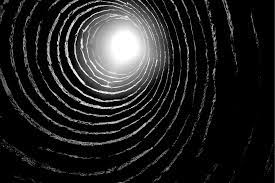Israeli Artem Dolgopyat won a gold medal in the men’s floor exercise at the 2020 Tokyo Games, making him Israel’s second-ever Olympic gold medalist.
Amid the celebration, though, was some grumbling, over the fact that the medalist is not Jewish according to Jewish law.
That, of course, is of no consequence in the context of the games – or, for that matter, of Israeli society. Israel’s citizenry includes Jews, Muslims, Christians and Druze.
But Mr. Dolgopyat’s status according to halacha, or Jewish religious law, prevents the medalist, who immigrated to Israel from Ukraine in order to further his career, from marrying a Jewish woman in Israel.
Mr. Dolgopyat’s mother, Angela Bilan, who isn’t Jewish but clearly evidences a stereotypical Jewish mother’s sensitivity, told a local radio station interviewer that “For [me to have] grandchildren, he needs to get married. The country doesn’t let him get married.”
What she was referring to is the fact that, as is the case in Egypt, Jordan, Indonesia and several other countries, there is no option of civil marriage in Israel. As in those other nations, only religious unions sanctified by clergy — of one or another religion — are recognized in Israel. And Jewish marriages there can only be effected between two Jews, and overseen by rabbis recognized by the Israeli central Rabbinate, which hews to halacha.
Israeli Knesset member Gilad Kariv, a former director of the Israeli Reform Movement, which does not consider halacha the arbiter of Jewish practice, shared in Ms. Bilan’s chagrin, tweeting: “Artem, you, a champion, will continue to bring medals, and we will continue to fight strongly to bring you free choice in marriage and divorce.”
For a informed take on the issue, though, some historical background is necessary.
We Americans have an almost instinctive affinity for the concept of church-state separation. Religion in the U.S. is a private matter, and government institutions do not – may not – entangle themselves with religion.
But many countries in fact have official religions. There are, of course, Muslim countries like Afghanistan, Algeria, Bahrain, Egypt, Iran, Jordan Kuwait, Malaysia, Morocco, Pakistan, Qatar, Saudi Arabia, Somalia, Tunisia and Yemen.
But also Christian ones. Like Costa Rica, Liechtenstein, Malta, Monaco, Italy, Argentina, Dominican Republic, El Salvador, Paraguay, Peru, Poland, Greece, England, Denmark, Greenland, Iceland, Norway, Finland and Sweden.
Even several Buddhist ones, like Bhutan, Cambodia and Sri Lanka.
Israel is, of course, a Jewish one, the only such country on the globe. And, like most of the above, it is not a theocracy but a democracy. Nevertheless, it respects its claim to Jewishness in certain limited ways.
On June 19, 1947, shortly before Israel declared its existence, Ben-Gurion and other officials of the Jewish Agency signed what came to be known as the “Religious Status Quo Agreement.” In the words of the late University of Pennsylvania Professor of International Law Harry Reicher, the agreement was “for significant elements of the religious population… the inducement to their participation in that creation [of Israel], and… was quite fundamental to the character with which the State was stamped at its birth.”
That foundational document, which was addressed to representatives of the Agudath Israel movement (whose American arm I work for) declared the nascent state’s guarantee of religious freedom for all its inhabitants, but, in order to honor the word “Jewish” in the phrase “Jewish State,” pledged state observance of the Jewish Sabbath as the official day of rest, provision of only kosher food in government kitchens and the option for citizens to choose a system of traditional Jewish religious education for their young.
It also addressed Jewish “personal status” issues like marriage, divorce and conversion, assuring the religious community that “everything possible will be done [to] avoid, Heaven forbid, the splitting of the House of Israel into two.”
What Israel’s first Prime Minister recognized was that multiple personal-status standards will inevitably result in multiple “Jewish peoples.”
And if “Jewish State” was to be more than a slogan, Ben-Gurion understood, in matters like marriage, divorce and conversion, some standard must be established. The logical standard to choose was the one that had maintained the Jewish people for centuries: halacha.
And so, it is that standard that currently prevents Mr. Dolgopyat from marrying a Jewish woman in Israel. It has not been reported whether his Belarusian girlfriend is Jewish. But for their marriage in Israel to be formally recognized by the state, they would have to be married in a religious ceremony of some sort.
In any event, there is another option for Mr. Dolgopyat and his intended. It is an option that is taken by some 9000 couples each year. Israeli civil law fully recognizes marriages of any sort that have been entered into in other countries. And so, Israelis and citizens of other countries without civil marriage options can travel to places like Cyprus, a short flight (160 miles) from Israel to marry in a civil ceremony and, at least in the case of Israel, have their marriages entered into the state registry.
That back-door approach will not make Mr. Dolgopyat Jewish in the eyes of the Rabbinate or of anyone who considers halacha the arbiter of Jewish status. Only a sincere conversion to Judaism could do that.
But it should at least make his loving mother happy.
© 2021 Rabbi Avi Shafran









